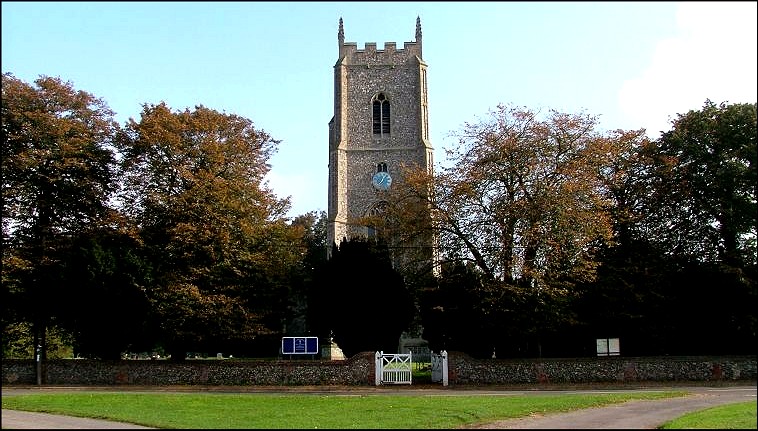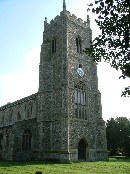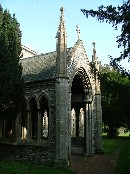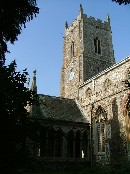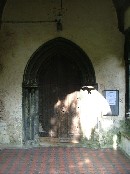| |
|
St Mary,
Great Massingham
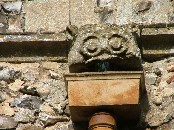 |
|
I
had never visited Great Massingham before, and I
didn't know what to expect. The very name
suggests somewhere grand, a sense of permanence
and belonging. And this was almost exactly right;
the large village sprawls impressively around its
several greens, each with a duck pond. St Mary is
a big church, set beside the largest green, the
village shop next door and 19th century cottages
facing across the grass towards it. The
churchyard is screened by chestnut trees, and
these lend their air of gravitas to the setting.
In the village street, people were going about
their business in a purposeful way. Great
Massingham seemed the kind of village which would
have a life of its own, with busy clubs and
societies, an active sense of belonging and
ownership. It was a place that could get along
very nicely, thank you.
|
I thought
of what the philosopher Roger Scruton had defined as the
enchantment of England; a sense of place which has grown
up from its roots, a spell cast on the land by the
centuries of quiet lives lived in a village like this.
Three
centuries have conspired to make the church what it is
today. If the great west tower of St Mary recalls the
glories of late medieval East Anglia, the extraordinary
porch speaks of the creativity and imagination of two
hundred years earlier, before the Black Death turned us
all serious. In fact, it was dismantled and rebuilt by
the Victorians, but it still bubbles with the enthusiasm
of Early English becoming Decorated, and so does the
chancel.
13th and
15th century glories adorn the exterior; but, like many
churches in large East Anglian villages, St Mary
underwent a huge restoration in the 19th century. As so
often, this has resulted in an urban feeling, but St Mary
escapes the dull anonymity of some by being so
thoughtfully and immaculately cared for. Despite its
size, it is a simple, prayerful space, a difficult effect
to achieve when the Victorians have been about their
business. This is helped by the beautifully arranged
chancel, with its modern altar frontal and stunning
reredos. The frontal depicts the Visitation, while the
reredos shows the crucifixion with the Blessed Virgin and
St John at the foot of the cross.
The
interior of St Mary is not without its medieval
survivals. Most significant perhaps is the sequence of
Apostles in the upper lights of the south chancel
windows. They include St Peter, St Philip, St James the
Less, St Bartholomew, St Jude and St Matthew.
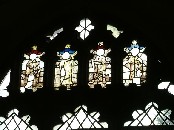 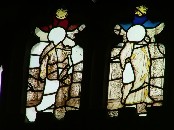 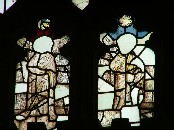
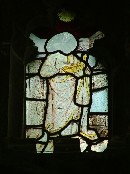 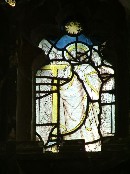
The font
is a large, plain object, roughly contemporary with the
porch, but nearby are several 15th century benches, in
poor shape and sadly marginalised by the parvenu
Victorian furnishings. However, they have some
fascinating bench ends. The panels themselves are
traceried as if in a cathedral, and along with a couple
of beasts is a figure kneeling at a prayer desk. The face
of the figure is a Victorian restoration, I think, and
I'm guessing that originally it portrayed a person
asleep. This is because I think it depicts sloth from the
Seven Deadly Sins. If so, I wonder what happened to the
other six?
We reached
Great Massingham at about lunchtime, and thought it would
be a good place to stop for a rest. We looked around for
the pub; there is one marked on the Ordnance Survey map,
but when we tracked it down it turned out to be a private
house. If it hadn't been for the map, you'd never have
known it had ever been anything other.
As I said,
this is a big village, with several greens; surely there
must be a pub beside one of them? We searched and
searched, hoping against hope. But there was none. I was
sure that Great Massingham must be one of the largest
villages in East Anglia without a pub, and this was a
real disappointment. For what use is a village without a
pub? And so we headed on to Weasenham, which thankfully
still has two.
Simon Knott, December 2006
Postscript,
April 2007: Tim Burton writes: I've just
read your account of Great Massingham having called in
there myself on Saturday. You must have visited about a
week before the reopening of the pub opposite the church
following a five-year closure! The 'Dabbling Duck' is
perhaps a little twee (regulation scrubbed pine floor,
pale blue dado, easy chairs, books, etc) but it does good
food and real ale and in summer you'll be able to sit out
on the green opposite. It was heaving when we called in.
|
|
|

